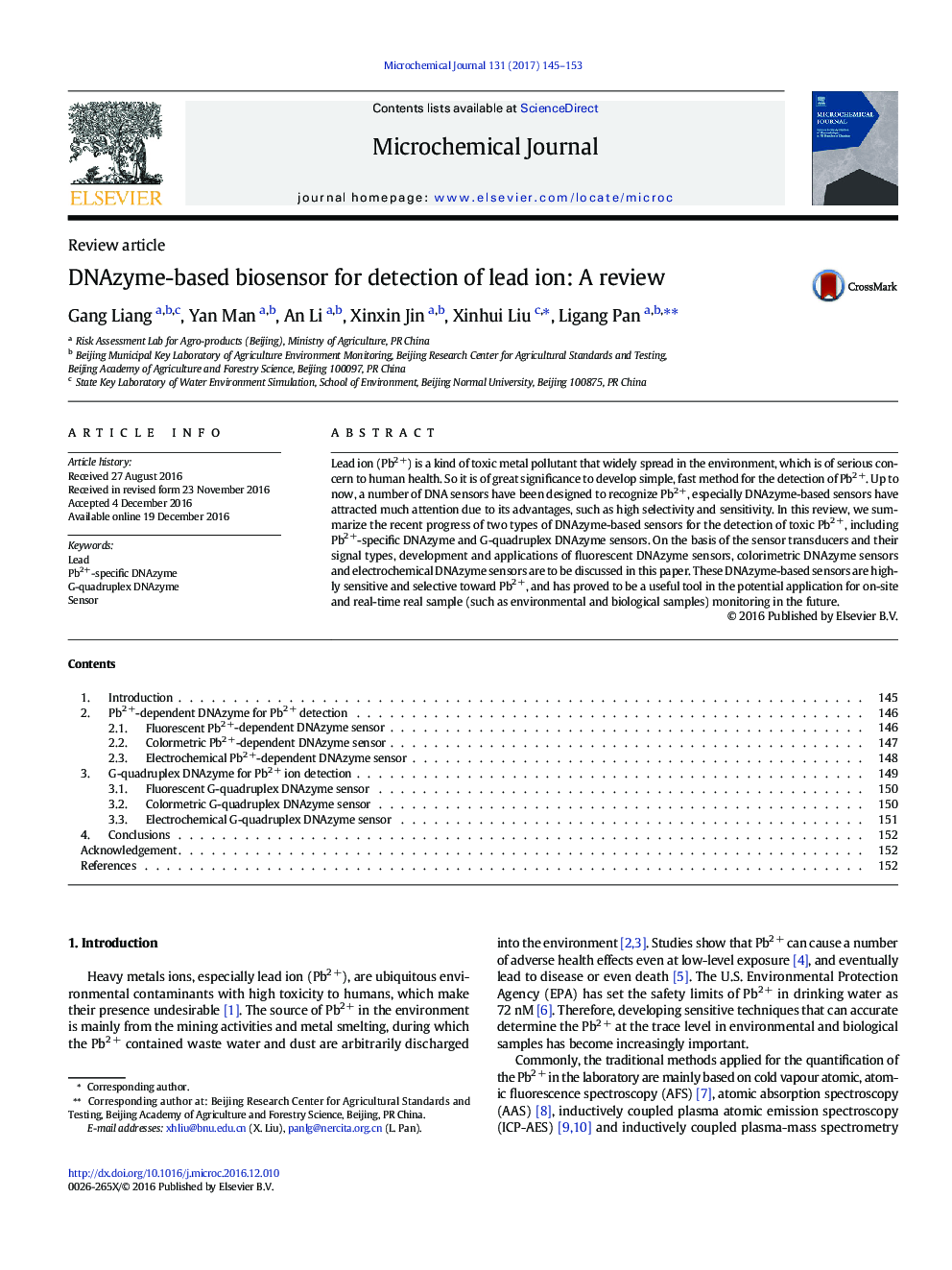| Article ID | Journal | Published Year | Pages | File Type |
|---|---|---|---|---|
| 5139246 | Microchemical Journal | 2017 | 9 Pages |
Abstract
Lead ion (Pb2Â +) is a kind of toxic metal pollutant that widely spread in the environment, which is of serious concern to human health. So it is of great significance to develop simple, fast method for the detection of Pb2Â +. Up to now, a number of DNA sensors have been designed to recognize Pb2Â +, especially DNAzyme-based sensors have attracted much attention due to its advantages, such as high selectivity and sensitivity. In this review, we summarize the recent progress of two types of DNAzyme-based sensors for the detection of toxic Pb2Â +, including Pb2Â +-specific DNAzyme and G-quadruplex DNAzyme sensors. On the basis of the sensor transducers and their signal types, development and applications of fluorescent DNAzyme sensors, colorimetric DNAzyme sensors and electrochemical DNAzyme sensors are to be discussed in this paper. These DNAzyme-based sensors are highly sensitive and selective toward Pb2Â +, and has proved to be a useful tool in the potential application for on-site and real-time real sample (such as environmental and biological samples) monitoring in the future.
Keywords
Related Topics
Physical Sciences and Engineering
Chemistry
Analytical Chemistry
Authors
Gang Liang, Yan Man, An Li, Xinxin Jin, Xinhui Liu, Ligang Pan,
